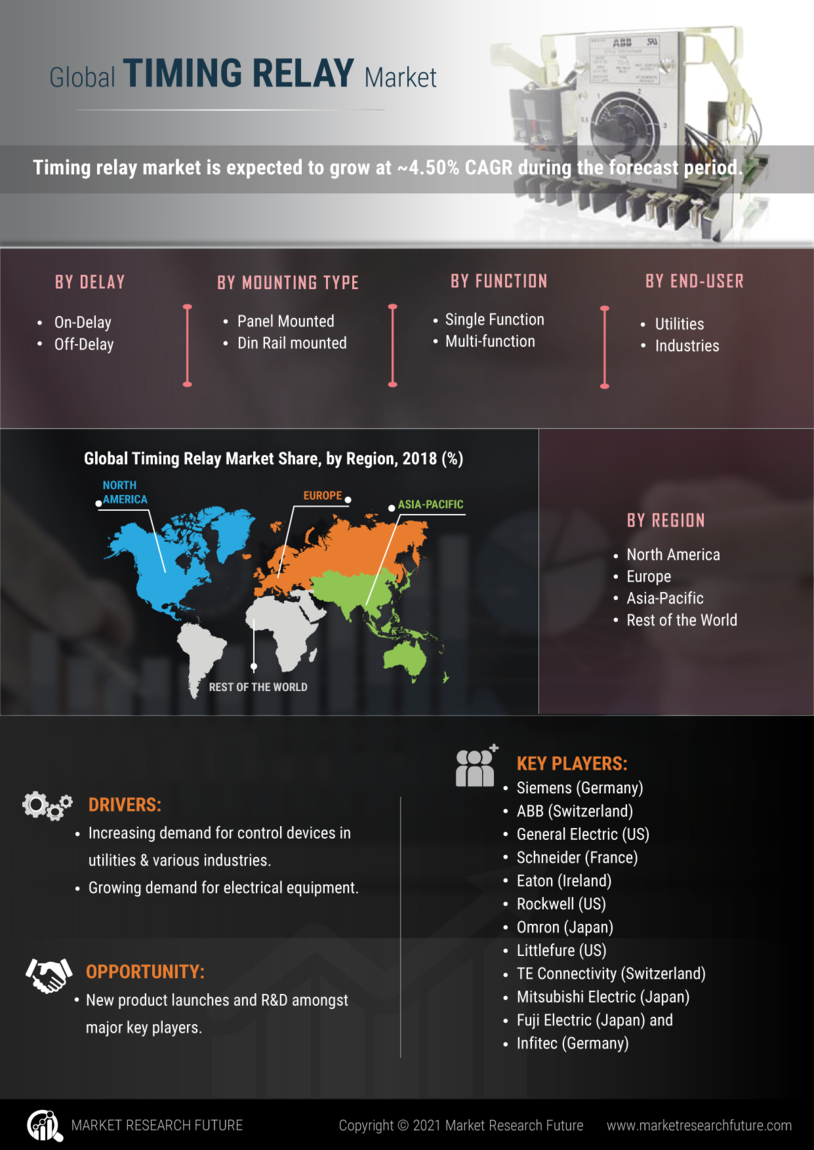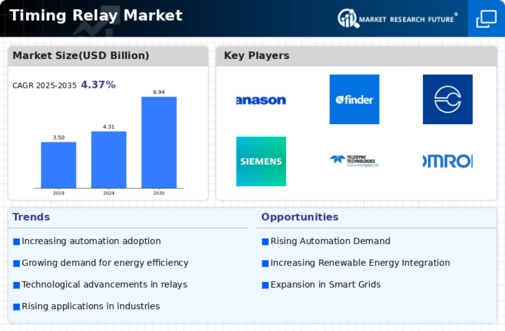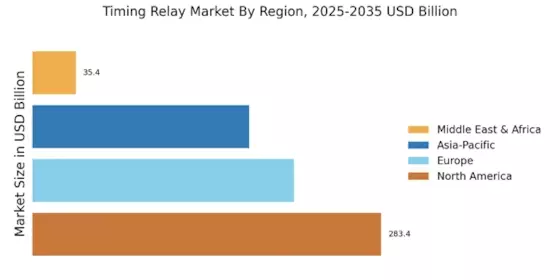Rising Demand for Automation
The increasing demand for automation across various industries appears to be a primary driver for the Timing Relay Market. As manufacturers seek to enhance operational efficiency and reduce human error, the integration of timing relays in automated systems becomes essential. Industries such as manufacturing, automotive, and telecommunications are increasingly adopting these devices to streamline processes. According to recent data, the automation sector is projected to grow at a compound annual growth rate of approximately 9% over the next five years. This trend indicates a robust market for timing relays, as they play a crucial role in controlling machinery and processes, thereby enhancing productivity and reliability in operations.
Growth in Renewable Energy Sector
The expansion of the renewable energy sector is likely to significantly influence the Timing Relay Market. As countries invest in solar, wind, and other renewable energy sources, the need for efficient control systems becomes paramount. Timing relays are utilized in various applications, such as managing energy distribution and optimizing the performance of renewable energy systems. The renewable energy market is expected to witness a growth rate of around 8% annually, which suggests a corresponding increase in demand for timing relays. This growth is driven by the need for reliable and efficient energy management solutions, positioning timing relays as vital components in the evolving energy landscape.
Increasing Focus on Safety Standards
The increasing focus on safety standards across various industries is a significant driver for the Timing Relay Market. Regulatory bodies are implementing stringent safety regulations that require the use of reliable control systems to prevent accidents and ensure operational safety. Timing relays are integral to safety systems, providing essential functions such as emergency shutdowns and fault detection. The market for safety equipment is anticipated to grow at a rate of around 6% annually, which suggests a rising demand for timing relays as industries strive to comply with safety regulations. This trend underscores the importance of timing relays in enhancing safety and reliability in industrial operations.
Expansion of Industrial Infrastructure
The expansion of industrial infrastructure is likely to propel the Timing Relay Market forward. As countries invest in upgrading and building new industrial facilities, the demand for efficient control systems, including timing relays, is expected to rise. Timing relays are crucial in various applications, such as controlling machinery and ensuring synchronized operations in manufacturing processes. The industrial sector is projected to grow at a compound annual growth rate of approximately 5%, driven by increased investments in infrastructure development. This growth presents a substantial opportunity for timing relay manufacturers, as they play a vital role in supporting the operational needs of modern industrial facilities.
Technological Advancements in Electronics
Technological advancements in electronics are reshaping the Timing Relay Market. Innovations in microcontroller technology and circuit design have led to the development of more sophisticated timing relays that offer enhanced features such as programmable settings and improved accuracy. These advancements enable manufacturers to produce timing relays that cater to a wider range of applications, from industrial automation to consumer electronics. The market for electronic components is projected to grow at a rate of approximately 7% per year, indicating a favorable environment for the timing relay segment. As technology continues to evolve, the demand for advanced timing relays is expected to rise, further driving market growth.


















Leave a Comment